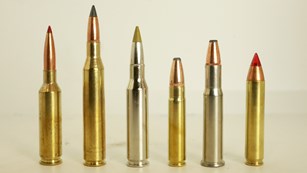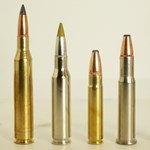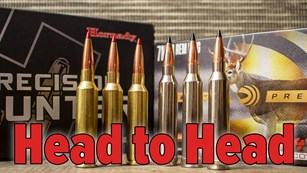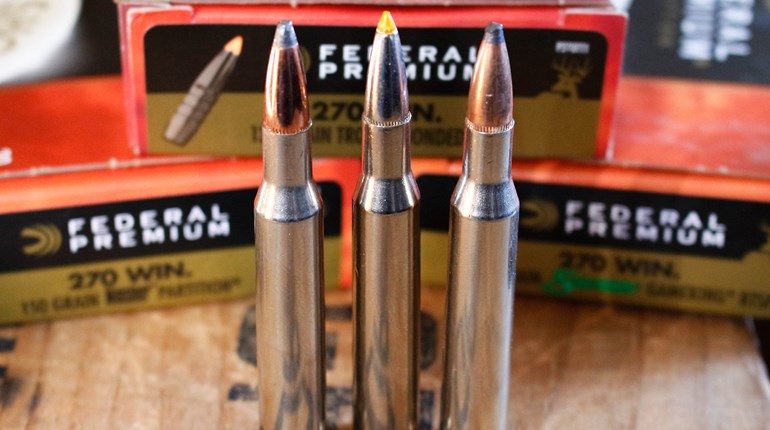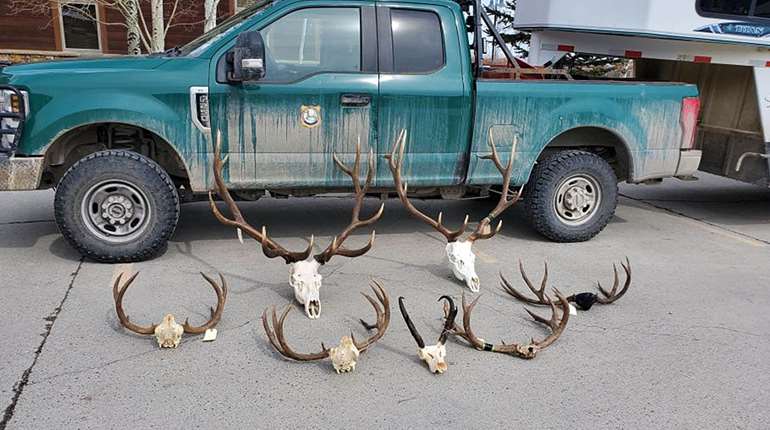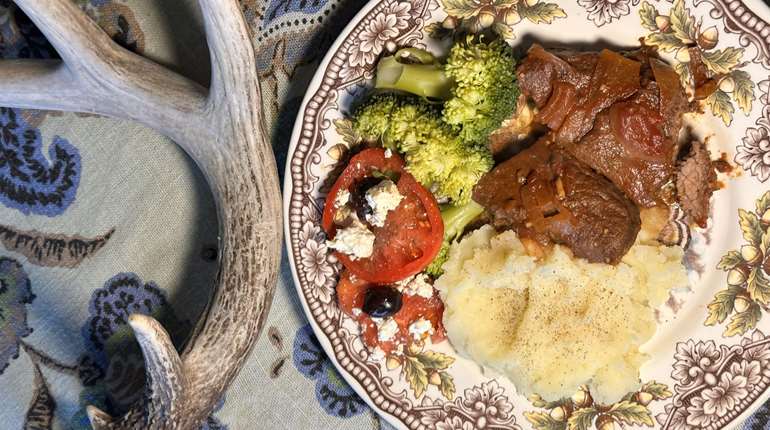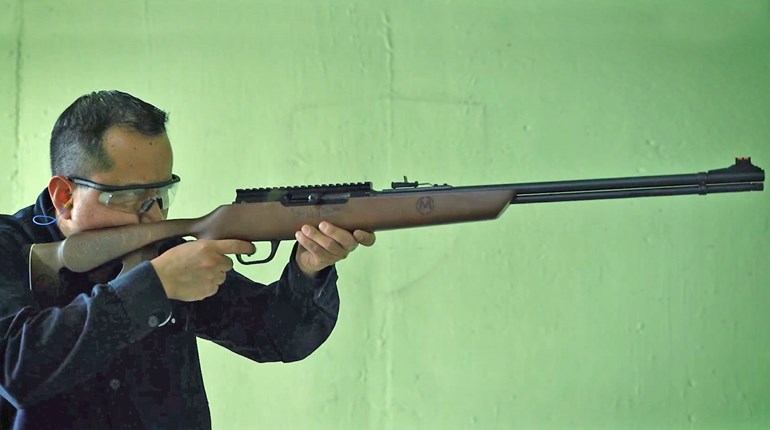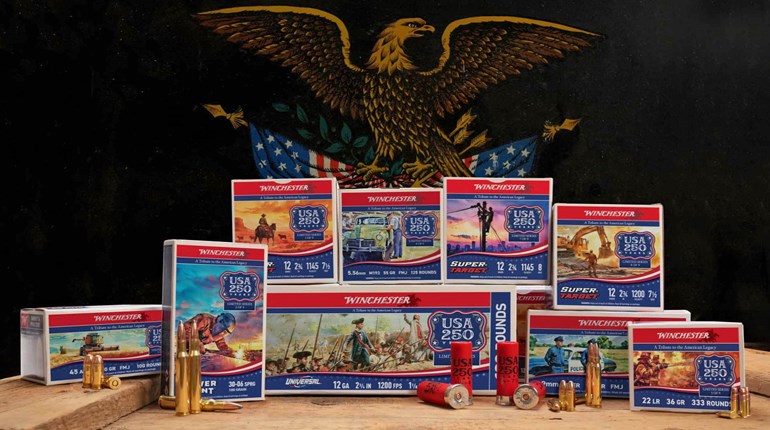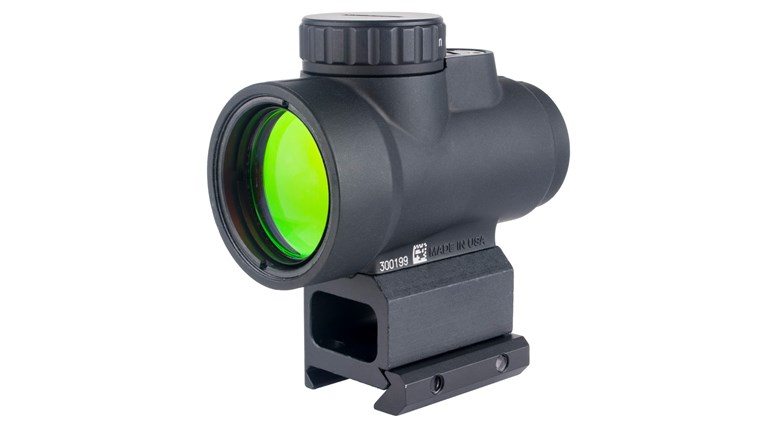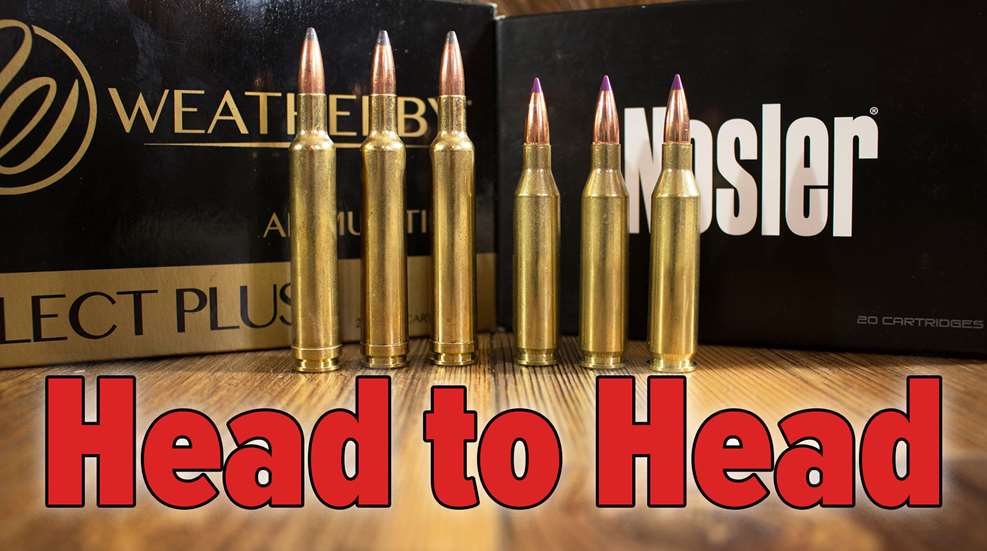
The 6mm craze began in the mid 1950s, with Winchester’s release of the .243 Winchester—being that new-fangled .308 Winchester case necked down to 6mm—and the .244 Remington, a necked-down .257 Roberts, following closely on its heels. In that same year, Holland & Holland released their .244 H&H Magnum, taking the prize for the fastest of 6mm cartridges. All pay homage to the much earlier 6mm Lee Navy, being a service cartridge from the late 1890s for the Marine Corps and Navy, and which would serve as the parent cartridge for the .220 Swift.
To the hunting world, the 6mm cartridges and projectiles bridged a gap between the true big came bore diameters (6.5mm, .277, 7mm and .30) and the varmint cartridges, which in the 1950s were .22-caliber centerfires. Designed to perform double duty, the 6mms offered bullets weighing 55 and 60 grains to handle prairie dogs, woodchucks, foxes, coyotes and the like, yet the 90- to 105-grain slugs would handle antelope and whitetail deer, with hunters pushing the envelope by using it on mule deer, caribou, and even elk and moose.

Where the .243 Winchester was the first dedicated 6mm on the market, the bore diameter would receive the ‘Weatherby’ treatment in 1968, when the belted .240 Weatherby Magnum made its debut. And in true Weatherby tradition, the .240 Weatherby is a speed demon. But how does it stack up against the original 6mm of the mid-20th century, the .243 Winchester? Let’s take a closer look at these two, to see if the younger offering can better the performance of the older.
The .243 Winchester is nothing more, nor nothing less, than the .308 Winchester case necked down to handle 6mm projectiles. It was the brainchild of Warren Page—then editor of Field & Stream magazine—who began to experiment with the .308 Winchester and the projectiles of the 6mm Lee Navy, which was discontinued in the 1940s. The .243 Winchester uses the same .473-inch case head diameter of its father, and the same 20-degree shoulder, yet the case length is 0.10-inch shorter. Chambered in the Model 70 bolt-action rifle and the Model 88 lever-action rifle, the .243 had two initial loads: an 80-grain softpoint for varmint work, and a 100-grain softpoint for deer and similar-sized game. The lack of recoil, combined with a light, short-action rifle, made the .243 a deer hunter’s dream, as shots could be accurately placed without the recoil level of the .270 Winchester and .30-06 Springfield, yet 100 grains of bullet would certainly get the job done in the deer woods and fields. The cartridge would prove to be flat shooting, resistant to the effects of wind deflection, and yet between the two loads, would cover the most popular hunting scenarios of the day, as it would also become the bane of eastern woodchucks.

Almost 70 years later, the .243 Winchester shows no signs of slowing down, even if it may seem old-fashioned in comparison to the 6mm Creedmoor, 6mm Dasher and similar cartridges designed for long-range target work. It has been chambered in nearly every type of rifle imaginable, from the bolt guns and lever actions, to autoloaders and pumps, single shots and combination guns. Several law enforcement agencies have relied on it for sniper work. Today, almost every manufacturer of centerfire rifle ammunition offers some sort of .243 Winchester load, and the cartridge remains a top-seller. Modern loads see an 80-grain bullet leaving the muzzle at 3200 fps, and the 100-grain softpoint moving at 2960 fps.
During the height of the counter-culture movement of the 1960s, Weatherby released their take on the 6mm bore diameter, in the .244 Weatherby Magnum. Having proven themselves with such classics as the .300 Weatherby Magnum, the .257 Weatherby Magnum and the .460 Weatherby Magnum, the name itself became synonymous with velocity. As a matter of curiosity, Weatherby cartridges of the 20th century, which are larger than 6mm in bore diameter, are based off the belted H&H case. When it came to the .240 Weatherby Magnum, they used a scaled down design, maintaining the rim diameter of the .30-06 Springfield (0.473-inch) but still using a belt for headspacing, and retaining the signature Weatherby double-radius shoulder. Case length is an even 2.500 inches, with an overall cartridge length of 3.100 inches, so the cartridge will need a long-action receiver.

The .240 Weatherby Magnum is, undoubtedly, a speed demon. Looking at the Weatherby factory ammunition, you'll see an 80-grain Barnes TTSX cruising along at 3440 fps, and a 100-grain Hornady flat base spitzer Interlock leaving the muzzle at 3275 fps. Both of these loads can be zeroed at 300 yards, without breaking the four inch mark above the line of sight. The 100-grain load will retain over 1,000 ft.-lbs. of energy out to 500 yards, making the .240 Weatherby a formidable deer cartridge. The major issue with this nasty little belted magnum is availability. Weatherby is the only source of currently available ammunition, and while it is excellent stuff, it is costly, running between $3.50 and $5 per cartridge.
Putting these two in the ring will see the Weatherby give a definite velocity and energy advantage over the Winchester cartridge, as the younger cartridge clocks in at almost 300 fps faster than the average .243 Winchester loads. This will translate to a flatter trajectory, and better wind deflection values, but how much? Comparing the 100-grain loads—a Hornady boattail for the .243 Winchester and a Hornady flat base for the .240 Weatherby Magnum—and using a 300-yard zero, you’ll see the .240 Weatherby dropping 9.0 inches at 400 yards and 24.3 inches at 500 yards, where the .243 Winchester will drop 11.3” at 400 yards and 30.5 inches at 500. This means the .243 Winchester is just over one MOA lower at the 500-yard mark, and in spite of the 200 ft.-lb. variance, the .243 Winchester will still kill deer at 500, providing the shooter can effectively place his or her shots from field positions.

Then there is the sheer volume of available loads for the .243 Winchester; a quick internet search shows over 50 different loads available for the classic cartridge, while the speedy .240 Weatherby has but three, and all are proprietary. That alone plays a big role in the choice of cartridges, as ammunition is not only plentiful but can be less than half the price of the Weatherby cartridge. Now, there is no reason not to use a .240 Weatherby Magnum if you found a rifle that you just couldn’t resist; the paper ballistics don’t lie, and the few .240 Weatherby shooters I've known have reported fine accuracy and remarkable killing power. The case is a unique design, so even for the handloaders, there will be no conversion of brass cases from another cartridge; you’ll need to procure the Weatherby stuff. For a 6mm hunting cartridge, it is truly difficult to beat a good old .243 Winchester. From cup-and-core softpoints, to frangible varmint bullets, to the lead-free copper monometal choices, all are well represented in the .243 Winchester ammunition choices. Premium bullets like the Nosler Partition and AccuBond, the Swift Scirocco II, the Hornady ELD-X, the Remington Core-Lokt Tipped and more; all make an already great cartridge even better. 6mm cartridges will come and go, but it’s going to be awfully difficult to unseat the most versatile of the lot: the .243 Winchester.
Looking for previous installments of our "Head to Head" series? Click here.






